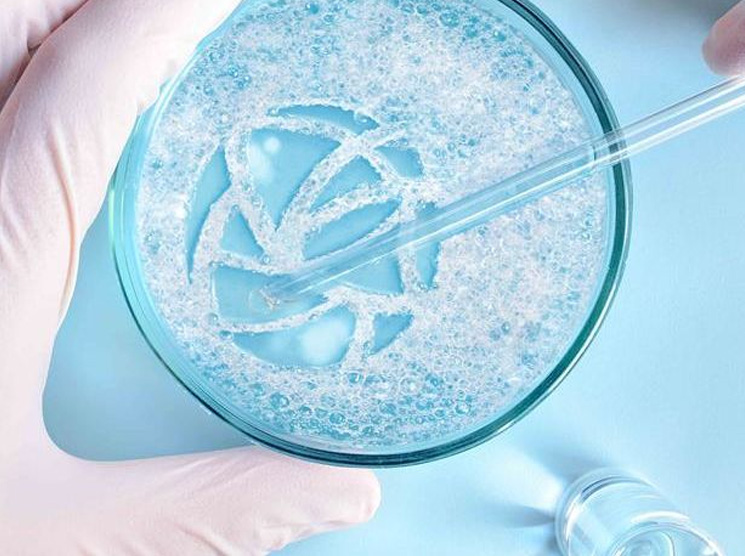How Defoamers Improve Performance in Manufacturing and Manufacturing

Understanding Defoamers
Defoamers play a crucial function in various making processes by successfully combating the development of foam, which can interfere with operations and affect item high quality. Foam can arise in countless contexts, such as during blending, heating, or chain reactions, possibly leading to inadequacies and inconsistencies in items. The mechanism through which defoamers run typically includes reducing the surface area tension of the fluid, enabling bubbles to climb and coalesce to the surface quicker, where they can after that burst.
Defoamers are developed from a selection of chemical compounds, including organic products, silicones, and surfactants, each customized to particular applications and processes. The selection of defoamer depends on factors such as the type of product being processed, temperature level, and the visibility of various other ingredients. Reliable defoamers not only lessen foam formation however additionally keep compatibility with the item, making sure that there are no damaging effects on the final result. Understanding the properties and features of defoamers is crucial for makers aiming to maximize their procedures, improve efficiency, and maintain the honesty of their items.
Secret Advantages of Defoamers
Using defoamers in making procedures offers a variety of considerable advantages that improve operational performance and product top quality. One of the key advantages is the decrease of foam formation during manufacturing, which can obstruct equipment and disrupt process. By decreasing foam, defoamers make sure smoother operations, bring about reduced downtime and upkeep expenses.
Furthermore, defoamers improve item consistency by protecting against air entrapment, which can compromise the honesty of the end product. This is especially vital in industries where visual look and appearance are vital, such as in paints, layers, and foodstuff. Improved item top quality not only satisfies consumer assumptions but likewise reinforces brand name reputation.
Furthermore, defoamers can assist in optimizing resource use. By boosting the efficiency of resources use, they add to set you back savings and reduced waste, aligning with sustainability goals. The application of defoamers can lead to much shorter handling times, making it possible for producers to boost manufacturing ability without significant resources financial investment.
Applications in Numerous Industries
In producing processes across numerous markets, the application of defoamers plays an important function in enhancing performance and item high quality. These chemical additives are used in markets such as food and beverage, pharmaceuticals, and fabrics to alleviate foam-related challenges.
In the food and drink market, defoamers are important during the fermentation procedure, stopping foaming that can interfere with manufacturing and spoil the product's honesty. Likewise, in the pharmaceutical industry, defoamers are made use of in the formula of liquid medications, making sure uniformity and security while decreasing waste.
Fabric manufacturing additionally benefits from defoamers, as they are used in coloring and ending up processes to advertise also distribution of dyes and chemicals. This application not just improves the last item's appearance but additionally minimizes the amount of water and power taken in throughout production.
Additionally, in the paper Look At This and pulp market, defoamers help preserve process effectiveness by decreasing foam that can prevent equipment performance. On the whole, the diverse applications of defoamers throughout these industries underscore their value in optimizing production procedures and providing top quality items.

Picking the Right Defoamer
Selecting a proper defoamer is vital for taking full advantage of performance and top quality in manufacturing processes. The choice of defoamer depends on different variables, consisting of the details application, the kind of foam being created, and the solution of the item being produced.

Firstly, consider the chemical compatibility of the defoamer with various other components in your formula. A defoamer that communicates negatively with various other elements can negatively impact product quality. Furthermore, the temperature and pH range throughout processing are crucial; some defoamers execute efficiently under certain problems while ending up being ineffective in others.
Second of all, assess the defoamer's performance qualities, such as its ability to swiftly decrease foam and its perseverance during manufacturing. It is necessary to choose an item that not only removes foam rapidly yet also keeps its effectiveness with time.
Lastly, take into consideration regulatory and ecological factors, especially if your production process goes through strict compliance criteria. Selecting a low-toxicity or biodegradable defoamer can assist fulfill sustainability goals while making sure functional efficiency. By attentively analyzing these criteria, makers can make informed choices that enhance efficiency and item honesty.
Finest Practices for Execution
Successful application of defoamers in manufacturing processes requires careful planning and adherence to best methods. Choosing the appropriate defoamer, as formerly gone over, is critical; guarantee it is compatible with the materials involved and addresses the identified frothing concerns properly.
Following, keep clear interaction with all stakeholders, consisting of drivers and quality control groups. Educating sessions can aid make certain that every person recognizes the application procedures, potential influence on item quality, and security factors to consider. Applying a test stage can also be advantageous; monitor efficiency closely to determine efficiency and make necessary changes.
Furthermore, regular screening and surveillance of foam levels can provide useful insights right into the defoamer's performance with time. Changing does in reaction to adjustments in production variables will certainly assist keep optimal performance - defoamers. Lastly, recording all processes and results advertises continuous enhancement, permitting fine-tuning of defoamer usage and enhancing general performance in producing operations.
Conclusion
In recap, defoamers play an essential function in boosting performance within production and production processes. By minimizing foam development and promoting bubble coalescence, try these out defoamers add to boosted product high quality, uniformity, and functional performance.
The advantages expand to item top quality and price financial savings, as defoamers aid simplify processes.Defoamers play an essential role in various manufacturing processes by effectively combating the formation of foam, which can disrupt procedures and influence product quality. Recognizing the homes and functions of defoamers is important for producers aiming to maximize their procedures, boost performance, and keep the stability of their items.
Using defoamers in manufacturing More Info processes uses a variety of substantial advantages that boost operational effectiveness and item quality.Furthermore, defoamers enhance item uniformity by avoiding air entrapment, which can endanger the honesty of the final product.
Comments on “How Defoamers Are Used to Prevent Foam in Food and Beverage Production”